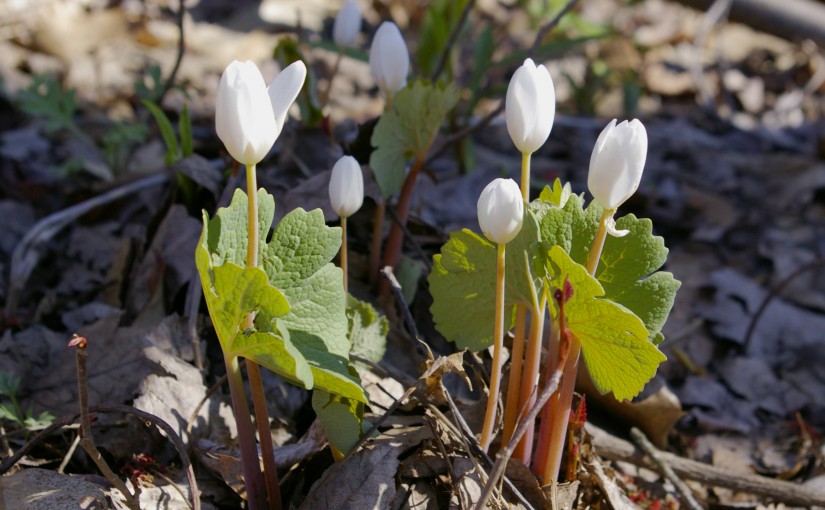Every year Cub Scout Pack 170 cleans up Edmund Road in Newtown, CT. It’s our Earth Day conservation project. My son and I spent an hour one Saturday morning picking up garbage and admiring flora. Truth be told I was the only one admiring the flora.
We cleaned up litter on a Saturday. I was so impressed by the beauty of nature I returned Monday, April 27th 2015 to take pictures.
Edmund Road runs along interstate 84 and cuts straight through a swamp. There’s a large stream on one side of the road and standing water on the other.

The plants were growing just up from the edge of the water in partial shade and humusy soil.
It was worth the return trip.
Connecticut Wetland Plants







My childhood home has a small stream and the far side is covered with spicebush. I can still smell the spice when you crushed the leaves or broke the brittle twigs.


Across the street from my childhood home is a large swamp. A friend and I would go to the swamp and beat the skunk cabbage with sticks because it’s a “Bad” plant. The more we hit the stinkier it got. I’d like to apologize to all those poor skunk cabbage plants. I didn’t know any better.
Thanks for joining me.

Comments
4 responses to “Wetland Plants of CT”
Beautiful photos, especially the closeups. Thank you for sharing your knowledge.
Glad you enjoyed the pictures Liz.
So great to see the photos of Sanguinaria! I used to work for a company that manufactures herbal medicine (alcohol extracts, mostly) and most all of our products were made using fresh plants wild-crafted from all over the US. One year we received our shipment of Sanguinaria days LATE…which meant the plants had to be discarded and the wild-crafter had to harvest a second time. The problem was that he’d written, in very large letters on the outside of the box, “BLOODROOT”, because he’d harvested several different plants that day and wanted to make sure they all went to the correct address. Fed Ex got very freaked out and had to quarantine the box until they figured out what was going on!!!
That’s a funny story except for the plants that died. I guess that’s a good reason to stick with the scientific name when labeling plants. Thanks for sharing.